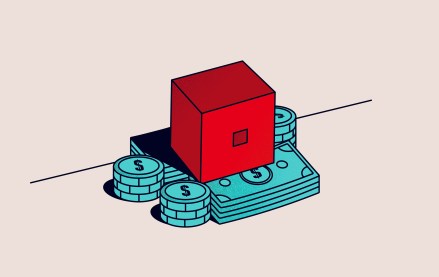Here’s what else a $7M, 30-second Super Bowl budget can purchase in 2025

This story is part of Digiday’s annual coverage of the Super Bowl. More from the series →
The Super Bowl is a pricey party. But it’s not the only joint in town.
Shared moments like the big game — which last year was watched by an average of 123.4 million U.S. viewers, second only to the Apollo moon landing in July 1969 — are more valuable than ever.
Getting a brand in front of those viewers isn’t cheap. A 30-second spot during the big game carried a $7 million sticker price during Fox’s upfronts this year. Last-minute spots freed up by brands pulling their ads (some in response to the California wildfires) went for as much as $8 million, according to Adweek.
The cost hasn’t put off brands like NerdWallet, Reese’s Pieces, Michelob Ultra, Novartis or Rocket from booking spots. But there are other ways to spend that money. So, without further ado, here’s Digiday’s annual look at what $7 million can get a media buyer elsewhere. (See our previous tallies here, here, here and here.)
1.35 billion TikTok impressions
While advertisers expect 120 million-odd Americans to tune into the Super Bowl, not all of them will be entirely focused on the big game. TikTok might well be the way to reach Sunday’s legion of the distracted — particularly its younger members.
Amid uncertainty over the platform’s ongoing presence in the U.S., TikTok CPMs have fluctuated over the last year, rising 18.5% in the final quarter of the year, before dropping 12.1% to $5.18 CPM in Q1 of 2025, according to eMarketer estimates. At that price, an advertiser could see 1.35 billion impressions for that $7 million Super Bowl ad price tag. Whether or not users will be giving brand interventions their full attention is more debatable.
1.6 billion Instagram Reels impressions
Speaking of TikTok’s uncertain future, rivals have been trying to tempt away advertisers. With its Reels product a close analogue for TikTok’s short-form video format, Instagram falls among that pack. Parent company Meta offered a percentage match for incremental spend against Reels ads or for incremental budget — with no specific product or measurement solution required — during the month of January, for example.
Special deals aside, CPMs on Reels averaged $4.29 in January, while cost-per-click (CPC) was $1.21, according to data from media agency Gupta Media. With a $7 million spend, an advertiser could achieve 1.6 billion impressions on Reels.
214 million impressions on Amazon Prime Video
Amazon’s entry into the streaming ad marketplace this time last year shook the sector and improved the e-commerce giant’s commanding position in the market.
CPMs for Amazon’s streaming service were priced lower than competitors throughout 2024, forcing its rivals to drop their own rates. As of Q4, CPMs for Prime Video spots sat at $29, according to one media buyer. With a Super Bowl-equivalent budget, that buys up to 214 million “Rings of Power” viewers.
10 million clicks on Walmart Connect
Retail media networks continue to proliferate and advertiser dollars, at least for now, continue to rise in tandem.
”Overall, CPCs seem to have plateaued and are staying relatively constant year-over-year,” Howard Diamond, svp, head of growth and product at Rise, a media agency owned by Quad, said in an email.
Diamond estimated search ad CPCs for Walmart Connect to currently sit at $0.70, and $0.76 for Target’s Roundel platform. With that $7 million Super Bowl budget, advertisers could bag 10 million and 9.2 million clicks on the platforms, respectively.
700 million impressions on Spotify
Spotify has long run a dual business model, drawing revenue from both paying subscribers and advertising. According to Harry Browne, vp of TV, audio and display innovation at Tinuiti, Spotify’s music streaming CPMs hover around the $10 mark, meaning that a $7 million spend could net a brand some 700 million impressions.
Podcast inventory, however, commands a higher price, with CPMs reaching $10 to $20 and host reads $30 to $40 — though Browne noted there’s substantial variation between networks and podcasts owing to differences in subscribers. By those figures, one could reach 350 million or 175 million with $7 million.
50 nano influencers for a year — or four huge ones for a month
Mel Ropp, a senior account director at creator media agency Goat, told Digiday that $7 million could buy you a serious influencer campaign.
Ropp said that budget could net 12 months’ worth of activity from “50 plus” creators each with 50,000 followers — or instead sign up four influencers with follower counts in the millions for a month. The difference being, the former would suit a brand going for a niche, targeted audience, while the latter would imply a shorter, concentrated campaign duration with a much broader audience.
Brands rarely forgo the chance to amplify content made by influencers with paid spend. Ropp’s estimate includes a 50/50 split between creator fees and production costs on one side, and media prices on the other, a typical set-up according to the exec. ”We don’t do influencers without media,” she said.
28,000 influencer gifts
While influencer marketing’s a strictly digital discipline, one element of the creator economy remains stubbornly physical: gifting. Many brands, such as sunscreen company Vacation, still consider gifting a means of courting an influencer without striking up a paid partnership. While it might be less costly than directly engaging an army of creators, it doesn’t come for free. And according to Eric Dahan, CEO of creator marketing agency Mighty Joy, which manages gifting programs on behalf of brand clients, a $7 million budget could enable you to entreat 28,000 nano- or micro-influencers.
That estimate covers labor and production costs associated with putting together a premium product “gift” as well as the postage. Depending on the nature of your product, Dahan said, those costs can go up or down. And though there’s no guarantee an influencer will feature your product, when such posts do happen they’re considered more valuable than paid ads.
A 3,000-square-foot pop-up
Super Bowl brands rarely limit their investments to TV. Some put aside a little cash for experiential work, especially if it can cross over from the real world into the digital one by prompting user-generated content from consumers.
The costs of doing so vary wildly depending on a client’s ambition, according to Adam Charles, chief growth officer at experiential agency Sparks. There’s a long list of variables affecting cost: location, deciding whether or not to lease or buy equipment, and the staffing required, of course.
But $7 million dollars is plenty to play with. At that cost, brand experiences could stretch from immersive pop-up structures to music festivals. “You could definitely do that in the $7 million-plus range,” said Shannon Jones, co-founder of creative agency Verb.
Per Charles, that amount would secure an advertiser a 3,000-square-foot installation rammed with digital screens and LED lighting for use over a 10-location run. While the types of experiences (and potential audiences) vary between projects, Charles suggested that a $7 million, 3,000-square-foot pop-up could accommodate 3,000 daily visitors interacting for roughly 15 minutes. It’d give a brand a smaller reach — but a more intimate connection with its audience.
More in Media Buying

Media Buying Briefing: Omnicom Media execs begin their pitch outreach ahead of an expected new-business glut
Omnicom’s acquisition of IPG is only a few weeks old, but its combined offer to the market will soon be put to the test as it meets with consultants.

Media buyers shift spend from The Trade Desk’s OpenPath over transparency concerns
OpenPath offers buyers a “cleaner” route to publishers, but some are concerned about lack of clarity over indirect costs.

Why brands are still showing up on Roblox
Over the past year, Roblox has become harder for brands to ignore — not because it has resolved the challenges of digital commerce, but because of the scale at which younger consumers already use it.








